 W
WAround the World in Eighty Days is an adventure novel by the French writer Jules Verne, first published in French in 1872. In the story, Phileas Fogg of London and his newly employed French valet Passepartout attempt to circumnavigate the world in 80 days on a £20,000 wager set by his friends at the Reform Club. It is one of Verne's most acclaimed works.
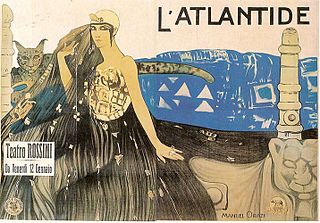 W
WAtlantida is a fantasy novel by French writer Pierre Benoit, published in February 1919. It was translated into English in 1920 as Atlantida. L'Atlantide was Benoit's second novel, following Koenigsmark, and it won the Grand Prize of the French Academy. The English translation of Atlantida was first published in the United States as a serial in Adventure magazine.
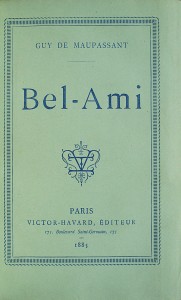 W
WBel-Ami is the second novel by French author Guy de Maupassant, published in 1885; an English translation titled Bel Ami, or, The History of a Scoundrel: A Novel first appeared in 1903.
 W
WBelle et Sébastien is a 1965 novel by Cécile Aubry about a six-year-old boy named Sébastien and his dog Belle, a Great Pyrenees, who live in a village in the French Alps close to the Italian border. Sébastien lives with his adopted grandfather, sister, and brother, as his mother, a Romani, died after giving birth to him while trying to cross the border on Saint Sebastian's day. The novel, known in English-speaking countries as Belle and Sebastian, was made into a French live action television series in 1965, a Japanese anime version in 1981, and a motion picture in 2013, followed by two sequels in 2015 and 2017.
 W
WBelphégor is a 1927 crime novel by French writer Arthur Bernède, about a "phantom" which haunts the Louvre Museum, in reality a masked villain trying to steal a hidden treasure.
 W
WBlue Island is a 1988 novel by the French writer Jean Raspail. The narrative is set in Touraine during World War II, where a charismatic boy gathers his friends on an island, where they play war games which become increasingly more interlinked with reality. The book was published in English in 1991, translated by Jeremy Leggatt.
 W
WThe Charterhouse of Parma is a novel by Stendhal published in 1839. Telling the story of an Italian nobleman in the Napoleonic era and later, it was admired by Balzac, Tolstoy, André Gide, di Lampedusa and Henry James. It was inspired by an inauthentic Italian account of the dissolute youth of Alessandro Farnese. The novel has been adapted for opera, film and television.
 W
WClochemerle, published in the United States as The Scandals Of Clochemerle, is a French satirical novel by Gabriel Chevallier (1895-1969) first published in 1934. It centres on personal rivalries and local politics in the fictional village of Clochemerle, inspired by Vaux-en-Beaujolais, in Beaujolais in 1923 and satirises the conflict between Catholics and republicans in the Third Republic. The story concerns a dispute over the construction of a vespasienne near the village church. In its satirical portraits of individual inhabitants, it is an example of observational humour.
 W
WThe Count of Monte Cristo is an adventure novel written by French author Alexandre Dumas (père) completed in 1844. It is one of the author's more popular works, along with The Three Musketeers. Like many of his novels, it was expanded from plot outlines suggested by his collaborating ghostwriter Auguste Maquet.
 W
WFrom the Earth to the Moon: A Direct Route in 97 Hours, 20 Minutes is an 1865 novel by Jules Verne. It tells the story of the Baltimore Gun Club, a post-American Civil War society of weapons enthusiasts, and their attempts to build an enormous Columbiad space gun and launch three people—the Gun Club's president, his Philadelphian armor-making rival, and a French poet—in a projectile with the goal of a Moon landing. Five years later, Verne wrote a sequel called Around the Moon.
 W
WThe Hunchback of Notre-Dame is a French Gothic novel by Victor Hugo, published in 1831.
 W
WIn Search of Lost Time, also translated as Remembrance of Things Past, is a novel in seven volumes by Marcel Proust (1871–1922). It is his most prominent work, known both for its length and its theme of involuntary memory; the most famous example of this is the "episode of the madeleine," which occurs early in the first volume. It gained fame in English in translations by C. K. Scott Moncrieff and Terence Kilmartin as Remembrance of Things Past, but the title In Search of Lost Time, a literal rendering of the French, became ascendant after D. J. Enright adopted it for his revised translation published in 1992.
 W
WIn Search of the Castaways is a novel by the French writer Jules Verne, published in 1867–68. The original edition, published by Hetzel, contains a number of illustrations by Édouard Riou. In 1876, it was republished by George Routledge & Sons as a three volume set titled A Voyage Round The World. The three volumes were subtitled South America, Australia, and New Zealand. As often with Verne, English translations have appeared under different names; another edition has the overall title Captain Grant's Children and has two volumes subtitled The Mysterious Document and Among the Cannibals.
 W
WJourney to the Center of the Earth, also translated with the variant titles A Journey to the Centre of the Earth and A Journey into the Interior of the Earth), is a classic science fiction novel by Jules Verne. It was first published in French in 1864, then reissued in 1867 in a revised and expanded edition. Professor Otto Lidenbrock is the tale's central figure, an eccentric German scientist who believes there are volcanic tubes that reach to the very center of the earth. He, his nephew Axel, and their Icelandic guide Hans rappel into Iceland's celebrated inactive volcano Snæfellsjökull, then contend with many dangers, including cave-ins, subpolar tornadoes, an underground ocean, and living prehistoric creatures from the Mesozoic and Cenozoic eras. Eventually the three explorers are spewed back to the surface by an active volcano, Stromboli, in southern Italy.
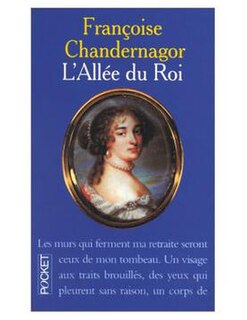 W
WThe King's Way is a novel by the French author Françoise Chandernagor first published in 1981. It is the story of Françoise d'Aubigné, marquise de Maintenon, who in the 17th century was almost the queen of France. It follows her destiny, from her birth in a prison in Niort and her poor childhood, to a marriage to a disabled poet, and her life in the court of Louis XIV, king of France, where she became his companion and finally his wife.
 W
WThe Life Before Us is a novel by French author Romain Gary who wrote it under the pseudonym of "Emile Ajar". It was originally published in English as Momo translated by Ralph Manheim, then re-published in 1986 as The Life Before Us. It won the Prix Goncourt in 1975.
 W
WThe Little Prince is a novella by French aristocrat, writer, and aviator Antoine de Saint-Exupéry. It was first published in English and French in the US by Reynal & Hitchcock in April 1943, and posthumously in France following the liberation of France as Saint-Exupéry's works had been banned by the Vichy Regime. The story follows a young prince who visits various planets in space, including Earth, and addresses themes of loneliness, friendship, love, and loss. Despite its style as a children's book, The Little Prince makes observations about life and human nature.
 W
WMadame Bovary, originally published as Madame Bovary: Provincial Manners, is the debut novel of French writer Gustave Flaubert, published in 1856. The eponymous character lives beyond her means in order to escape the banalities and emptiness of provincial life.
 W
WMathias Sandorf is an 1885 adventure book by French writer Jules Verne. It was first serialized in Le Temps in 1885, and it was Verne's epic Mediterranean adventure. It employs many of the devices that had served well in his earlier novels: islands, cryptograms, surprise revelations of identity, technically advanced hardware and a solitary figure bent on revenge. Verne dedicated the novel to the memory of Alexandre Dumas, père, hoping to make Mathias Sandorf the Monte Cristo of Voyages Extraordinaires series.
 W
WMichael Strogoff: The Courier of the Czar is a novel written by Jules Verne in 1876. Critics, including Leonard S. Davidow, consider it one of Verne's best books. Davidow wrote, "Jules Verne has written no better book than this, in fact it is deservedly ranked as one of the most thrilling tales ever written." Unlike some of Verne's other novels, it is not science fiction, but a scientific phenomenon is a plot device. The book was later adapted to a play, by Verne himself and Adolphe d'Ennery. Incidental music to the play was written by Alexandre Artus in 1880. The book has been adapted several times for films, television and cartoon series.
 W
WLes Misérables is a French historical novel by Victor Hugo, first published in 1862, that is considered one of the greatest novels of the 19th century.
 W
WThe Mysterious Island is a novel by Jules Verne, published in 1875. The original edition, published by Hetzel, contains a number of illustrations by Jules Férat. The novel is a crossover sequel to Verne's famous Twenty Thousand Leagues Under the Seas (1870) and In Search of the Castaways (1867–68), though its themes are vastly different from those books. An early draft of the novel, initially rejected by Verne's publisher and wholly reconceived before publication, was titled Shipwrecked Family: Marooned with Uncle Robinson, seen as indicating the influence of the novels Robinson Crusoe and The Swiss Family Robinson. Verne developed a similar theme in his later novel, Godfrey Morgan.
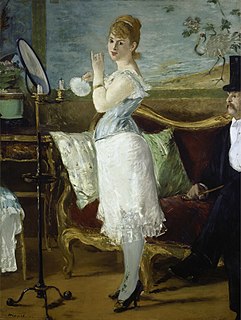 W
WNana is a novel by the French naturalist author Émile Zola. Completed in 1880, Nana is the ninth installment in the 20-volume Les Rougon-Macquart series.
 W
WLe Petit Nicolas is a series of French children's books. It was created by René Goscinny and illustrated by Jean-Jacques Sempé and it was first published on March 30, 1959. The books depict an idealized version of childhood in 1950s France.
 W
WThe Phantom of the Opera, is a novel by French writer Gaston Leroux. It was first published as a serialization in Le Gaulois from 23 September 1909, to 8 January 1910. It was published in volume form in late March 1910 by Pierre Lafitte. The novel is partly inspired by historical events at the Paris Opera during the nineteenth century and an apocryphal tale concerning the use of a former ballet pupil's skeleton in Carl Maria von Weber's 1841 production of Der Freischütz. It has been successfully adapted into various stage and film adaptations, most notable of which are the 1925 film depiction featuring Lon Chaney, and Andrew Lloyd Webber's 1986 musical.
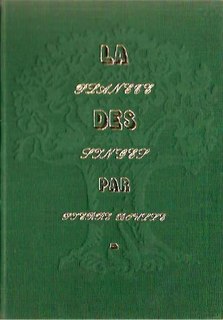 W
WLa Planète des singes, known in English as Planet of the Apes in the US and Monkey Planet in the UK, is a 1963 science fiction novel by French author Pierre Boulle. It was adapted into the 1968 film Planet of the Apes, launching the Planet of the Apes media franchise.
 W
WPot-Bouille is the tenth novel in the Rougon-Macquart series by Émile Zola. It was serialized between January and April 1882 in the periodical Le Gaulois before being published in book form by Charpentier in 1883.
 W
WThe Safety Matches, also translated under the title The Match Boy, is a novel by Robert Sabatier, published in 1969 by Albin Michel and translated into English by Patsy Southgate in 1972.
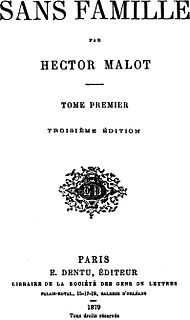 W
WSans Famille is an 1878 French novel by Hector Malot. The most recent English translation is Alone in the World by Adrian de Bruyn, 2007. The novel was reportedly inspired by the Italian street musicians of the 19th century, in particular the harpists from Viggiano, Basilicata.
 W
WThe Secret of the Night or Rouletabille and the Tsar is a 1913 mystery novel by the French writer Gaston Leroux. It is the third in his series of novels featuring the fictional detective Joseph Rouletabille, following on from The Mystery of the Yellow Room and The Perfume of the Lady in Black.
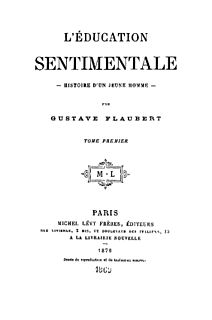 W
WSentimental Education is a novel by Gustave Flaubert. Considered one of the most influential novels of the 19th century, it was praised by contemporaries such as George Sand and Émile Zola, but criticised by Henry James. The story focuses on the romantic life of a young man at the time of the French Revolution of 1848.
 W
WStory of O is an erotic novel published in 1954 by French author Anne Desclos under the pen name Pauline Réage, and published in French by Jean-Jacques Pauvert.
 W
WSubmission is a novel by French writer Michel Houellebecq. The French edition of the book was published on 7 January 2015 by Flammarion, with German (Unterwerfung) and Italian (Sottomissione) translations also published in January. The book instantly became a bestseller in France, Germany and Italy. The English edition of the book, translated by Lorin Stein, was published on 10 September 2015.
 W
WThérèse Raquin [teʁɛz ʁakɛ̃] is an 1868 novel by French writer Émile Zola, first published in serial form in the literary magazine L'Artiste in 1867. It was Zola's third novel, though the first to earn wide fame. The novel's adultery and murder were considered scandalous and famously described as "putrid" in a review in the newspaper Le Figaro.
 W
WThe Three Musketeers is a historical adventure novel written in 1844 by French author Alexandre Dumas. It is in the swashbuckler genre, which has heroic, chivalrous swordsmen who fight for justice.
 W
WLe Tour de la France par deux enfants (1877) is a French novel/geography/travel/school book. It was written by Augustine Fouillée who used the pseudonym of G. Bruno. She was the wife of Alfred Jules Émile Fouillée. The book was widely used in the schools of the Third Republic, where it was influential for generations of children in creating a sense of a unified nation of France. Its success was such that it reached a circulation of 6 million copies in 1900, and by 1914 it had sold 7 million copies. It was still used in schools until the 1950s and is in print to this day. It is sometimes known as "the little red book of the Republic."
 W
WTwenty Thousand Leagues Under the Seas: A World Tour Underwater is a classic science fiction adventure novel by French writer Jules Verne.
 W
WTwo Years' Vacation is an adventure novel by Jules Verne, published in 1888. The story tells of the fortunes of a group of schoolboys stranded on a deserted island in the South Pacific, and of their struggles to overcome adversity. In his preface to the book, Verne explains that his goals were to create a Robinson Crusoe-like environment for children, and to show the world what the intelligence and bravery of a child were capable of when put to the test.